Seventh chakra or Sahasrara: a path to the Higher self

The seventh chakra is also called Sahasrara, which in Sanskrit language means “multiplied by a thousand”, a clear reference to the lotus of a thousand petals symbol of Illumination. It is the chakra of knowledge, consciousness, intelligence and humility.
This center of power is also known as crown center, or lotus flower. It is located in the center of the skull, specifically on the anterior fontanelle.
Receive all our tips by email!
Love Astrology? Subscribe Now and Receive Exclusive Content!
Sahasrara represents spirituality, the direct link with Divinity, harmony with the Universe, the Being above doing.
The 7th chakra reflects the expansion of Consciousness, the elimination of self-imposed limits and the expression of the true integral being. Here the energies of the lower chakras meet and balance, so that their light vibrates with all colors, with violet and white being the main tones.
On the physical level, Sahasrara governs the brain, pineal gland and serotonin.
Seventh Chakra or Sahasrara
When the 7th chakra works harmoniously, the subject enjoys complete vitality and maintains a full connection with the interior, the exterior and the Divinity, looking at themselves as a complete (integral) being and not divided into body, mind and spirit.
For these people there are no dogmas, nor do they try to impose their beliefs on other individuals. They enjoy the knowledge. Peace, enlightenment and understanding of the world are complete.
The liberation of Sahasrara cleanses and balances the 6 previous ones, allowing the subject to manifest their full potential. The authors Bodo J. Baginski and Shalila Sharamon in The Great Book of the Chakras (1995), explain that the condition of the 7th chakra prevents it from being blocked in the human energy structure, it is only more or less developed.
Since there is a mostly closed 7th chakra, the individual tends to be completely ignorant of their spirituality and related concepts, ignoring the meaning of their existence and disconnecting themselves from everything. When perceived as a divided being, anguish, insecurity and despair make easy prey for them, making them a participant in compulsive attitudes.
The subject can act arrogantly, believed to be the absolute owner of the truth, relentlessly seeking the external validation of their ideals, which makes them manipulative, dogmatic and materialistic. Their world revolves around the ego.
Reactivating the Seventh Chakra or Sahasrara
The vocalization of the OM mantra is considered effective to stimulate the 7th chakra, just like:
- the constant practice of meditation or prayer;
- the display of objects in white or violet tones;
- the use of essential oils of lotus, olive, amber and incense;
- and the use of gems and crystals, specifically amethyst, rock crystal, zircon and diamond.
The crown chakra is open upwards unlike other centers that are open forwards and backwards. This chakra connects us with the world of intuitive knowledge and spiritual connection. It is the junction with other dimensions.
It is the goal of all yoga to drive consciousness in this chakra and to realize themselves totally. When a yogi triggers the rise of the sacred Kundalini fire to the top of the head, it is realized by uniting all the cosmic principles that govern the universe, it transcends all its desires even the desire of realization, it enters into Samadhi (bliss).
When our 7th chakra is balanced and active and the others are balanced as well, we are aware of the unity of everything, and we attain the meaning of the sacred, the sacredness of life and all that is. We are aware of the interconnectedness of everything and we feel it deeply in ourselves. We are able to think and feel for ourselves with a deep sense of freedom and our inner guide always leads us to the right place.
Harmonization of the seventh chakra
The harmony of the seventh chakra can cause in us rather impressive modifications of vision and attitude. Our observable pace is slowing down and our quality of presence is excellent. Our ego no longer controls our choices but has left its place to our deep self. We become sober and solid.
The difficulties we face are as many proposals for work on ourselves. The cause-and-effect relationship of every event is revealed. We sense the precise purpose of our existence and understand how different this purpose is from what we planned, clearly seeing our destiny and accept it with gratitude. We remember our experiences as so many steps to take.
The trials made us grow and our minds are matured. We appreciate who we are today. We are aware that our life and process are not just in our hands.
The correct development of this chakra is manifested by the opening to the universal consciousness and, when the body and the mind are perfectly unified, leads to live, by moment, a state close to bliss.
One thing is certain: to actively live our spirituality means to really want to know who we are and to perceive our conscious reality. Our personal quest will flourish in a vital and resistant context and become concrete; it will be part of our daily lives.
We will not give up the material aspects of life, understanding that such a renunciation is not decided and that it does not necessarily fit into our path. We can choose to be accompanied but we will know that we must walk alone.
In order to keep your mind body balance, it is essential to open the crown chakra while relying on the first energy center. Thanks to essential oils, precious stones, pendulum and reiki, it is possible to re-harmonize it. However, kundalini yoga exercises are simple and effective ways for a balanced crown chakra.
The Chakras Explained
Get to know everything about all the 7 chakras bellow.

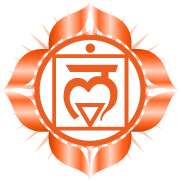
Muladhara
The First Chakra, which is the first of the seven main chakras, is designated by the name of Muladhara (from the Sanskrit mule “root” and adhara “support”). It is also known as radical chakra, root chakra, basal chakra or coxal center.
Read more
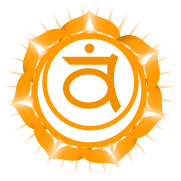
Swadhisthana
The Second Chakra of the seven main chakras is designated by the name of Swadhisthana (from the Sanskrit swa, “the proper” and adhisthana “abode”). It is also known as the sacred chakra or sacred center.
Read more
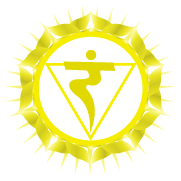
Manipura
An interiorized symbol of solar energy, the third chakra or Manipura is the seat of the Ego and our self. Through it we can affirm our individuality and exercise our free will to build our own life.
Read more

Anahata
The Fourth Chakra of the seven main chakras, is designated by the name of Anahata, which in Sanskrit refers to something that has not been touched, the sound produced by two elements that meet but do not collide. It is also known as heart chakra, cordial center, and unconditional love chakra.
Read more
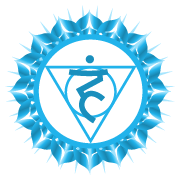
Vishuddha
The fifth chakra is also called throat chakra, or laryngeal chakra. Its Sanskrit name is Vishuddha, meaning “pure”. The problem of the 5th chakra is bound to express its truth in a fair way. This requires that chakras 1 to 4 be well balanced. Located in the throat, between the laryngeal (or nut) prominence and the larynx, Vishuddha represents the link between thoughts and emotions, the way of expressing and communicating.
Read more
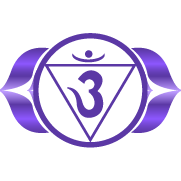
Ajna
The 6th chakra, Ajna, is also called the frontal chakra or 3rd eye. It is the chakra of the inner vision and the extrasensory perception. The 3rd eye allows psychics and therapists to see the aura, to go back into past lives, etc.
Read more
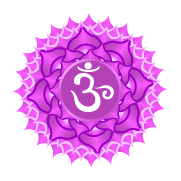
Sanskrit
The seventh chakra is also called Sahasrara, which in Sanskrit language means “multiplied by a thousand”, a clear reference to the lotus of a thousand petals symbol of Illumination. It is the chakra of knowledge, consciousness, intelligence and humility.
Read moreYou may also like:
- Aura cleansing ritual: why you should do it
- Healing gemstones: the most popular
- Forest bathing: why you should try it

